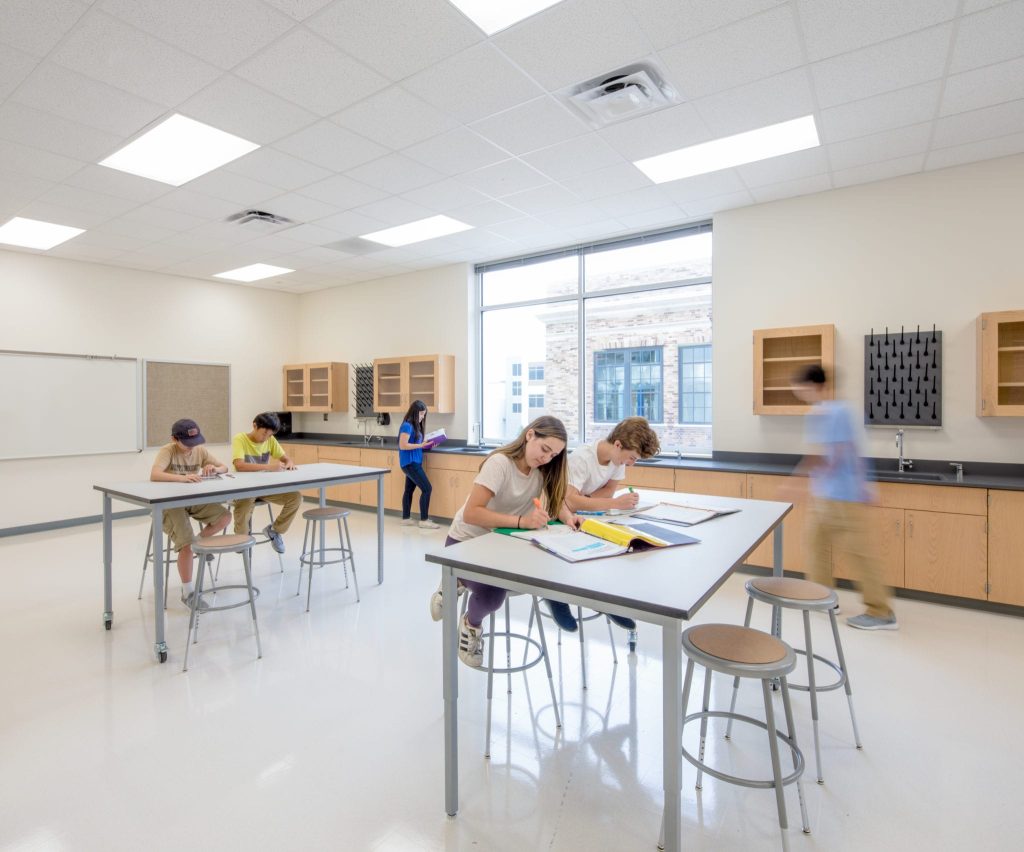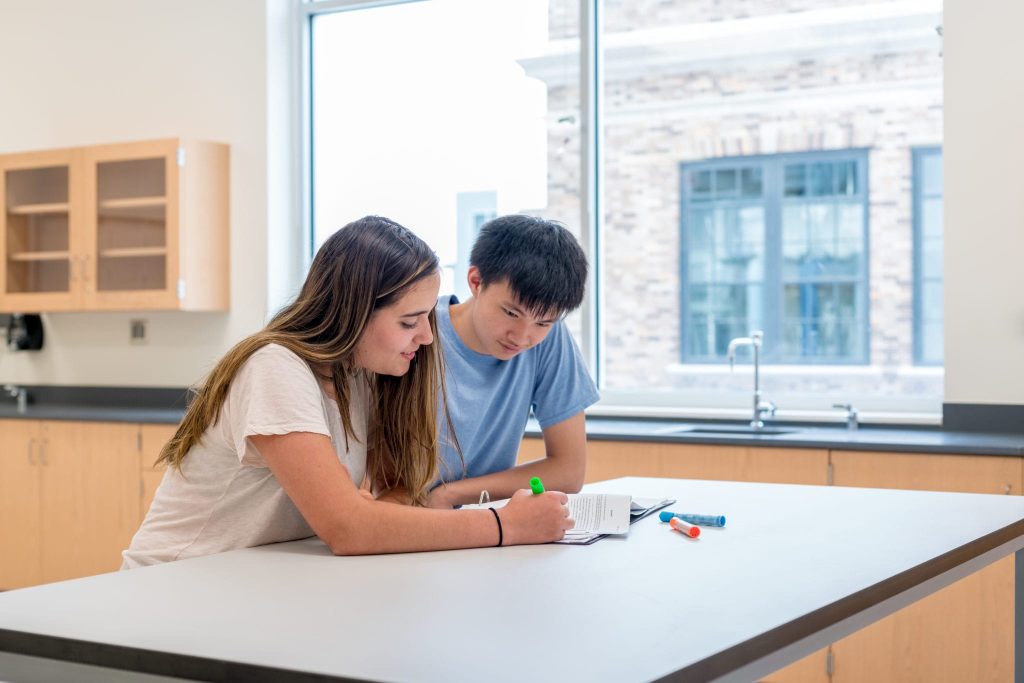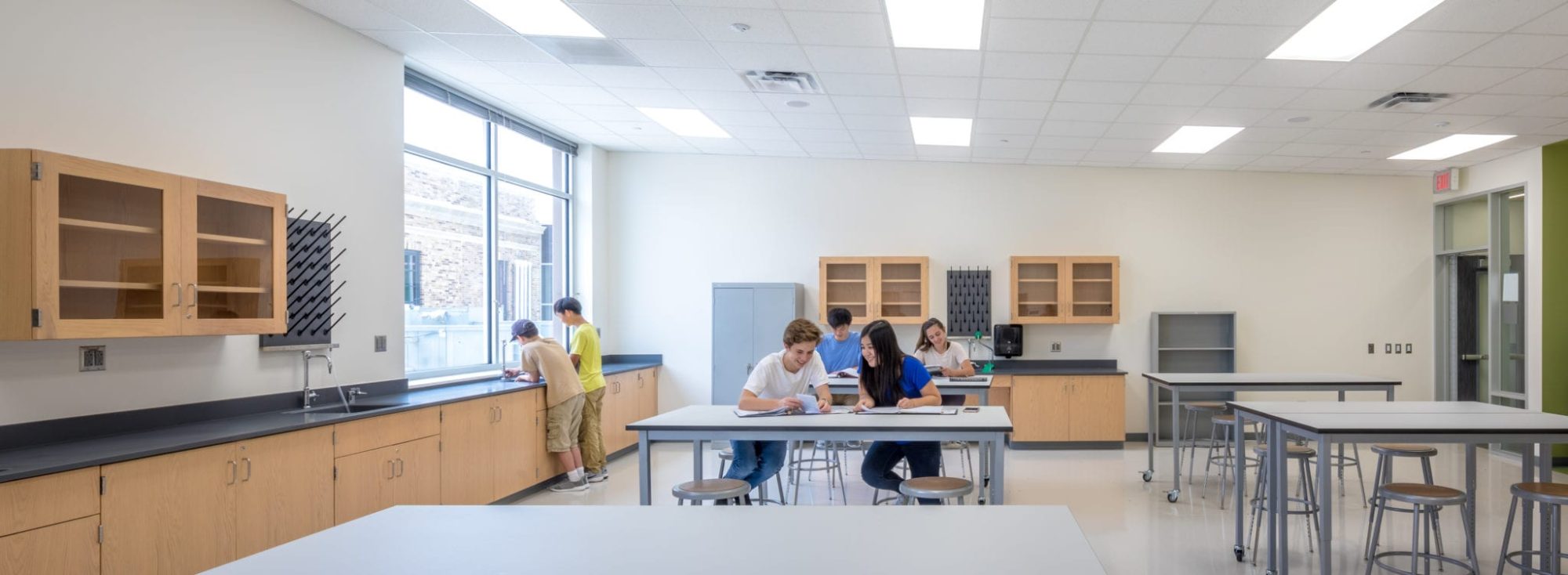We as design professionals are obligated to provide safe, cost effective, and appropriate engineering solutions to our clients. When it comes to prescribing the necessary engineering controls and safety features to provide a safe learning environment for our children in the K-12 Educational Science Classroom, we must sift through the over-abundant information available to determine what is, in fact, code and regulatory requirements versus what is anecdotal guidelines. A common question is “What is the minimum ventilation rate for an educational science classroom?” This is often followed by “What is the code requirement for minimum ventilation rates in an educational classroom?”

Code Requirements
In point of fact, there is no code-mandated air exchange rate for any laboratory, including K-12 Educational Science Classrooms. There are, however, minimum ventilation (outdoor air ) rates and minimum exhaust rates mandated by code. Most of the modern model codes (Uniform Mechanical Code, International Mechanical Code) refer to ANSI/ASHRAE Standard 62.0-2010 Ventilation for Acceptable Indoor Air Quality as the reference for ventilation rates according to occupancy and type of facility. It is important to note that ventilation is defined as outdoor air.
The breathing zone outdoor airflow is defined as the outdoor airflow required in the breathing zone of the occupied space as follows:
Vbz = Rp * Pz + Ra * Az
Where Vbz = breathing zone outdoor airflow
Az = zone floor area
Rp = outdoor air rate per person as determined by Table 6-1
Pz = zone population
Ra = outdoor airflow per unit area as determined by Table 6-1
Utilizing Table 6-1, under the category Educational Facilities, Science Laboratories have the following information provided:
Rp = 10 cfm per person
Pz = zone population
Ra = 0.18 CFM/ft2
Using the default occupancy of 25 persons per 1000 ft2, the minimum ventilation for a science laboratory is 0.43 cfm/ ft2hzh. (Note: for any given science laboratory, and assuming a 9 foot ceiling height, this equates to roughly 2.9 air changes per hour (ACH)).
In addition, Table 6-4 specifies a minimum exhaust rate of 1.00 cfm per square foot of Educational Science Laboratories.

Texas Administrative Code Requirements
The Texas Administrative Code, Title 19, Part 2, Chapter 61, Subchapter CC, Rule 61.1036 is the Commissioner’s Rules Concerning School Facilities. Within the body of the Rule, the minimum provisions for a school science laboratory, science classroom, science laboratory/classroom, science preparatory room and chemical storage room shall include the following provisions:
- A built-in fume hood
- A built-in eye/face wash
- A built-in safety shower
- Ventilation system such that air from the science rooms is not recirculated into non-science areas. In chemical storage rooms, the ventilation system shall exhaust the air to the outside, and shall not be recirculated back into the space. There is no minimum ventilation rate called out, so we refer back to the minimum ventilation rate given by ANSI/ASHRAE 62.1 – 2010.
- An exhaust fan controlled by the Instructor shall be provided in all rooms where hazardous or vaporous chemicals are to be used or stored. The exhaust fan shall be of sufficient size to exhaust the total volume of the room within 15 minutes. The exhaust shall be vented to the outside above the roof and away from air vents.
- A minimum of 6 linear feet of horizontal workspace shall be provided for each student in each middle school and high school science laboratory and science laboratory/classroom.
- If electricity, gas and or/water are provided in student areas, emergency shut-off controls shall be provided for each in a location accessible to the instructor but not easily accessible to the students.
In section v above, the Texas Administrative Code calls for an exhaust fan, controlled by the instructor, sufficient in size to exhaust the total volume of the room in 15 minutes, or be capable of providing an exhaust rate of 4 ACH. A high school combination science classroom and lab is required to have minimum of 1,400 square feet. A stand alone high school chemistry lab is required to have a minimum of 1,000 square feet.
For the combination science classroom/lab with an assumed 9 foot ceiling height, the minimum exhaust rate called for at 4 ACH would result in a requirement for 840 CFM of exhaust. Since the modern codes are based on ASHRAE Standard 62.1-2010 and this calls for a minimum of 1 CFM per square foot of educational science laboratories, the intent of the TAC is already met by the normal exhaust requirements.
Previous DBR designs have been based on sizing the exhaust for the science classroom/lab and providing a fan that is two speed to serve the area. The low speed is the design exhaust rate, and the high speed is a typical 50% increase.
A typical science classroom lab of 1400 square feet and a 9 foot ceiling would then have a low speed exhaust fan sized at a minimum of 1400 CFM with a high speed of 2100 CFM. The low or normal exhaust would result in an air exchange rate of 6.7 ACH, while the high speed would result in an air exchange rate of 10 ACH.

